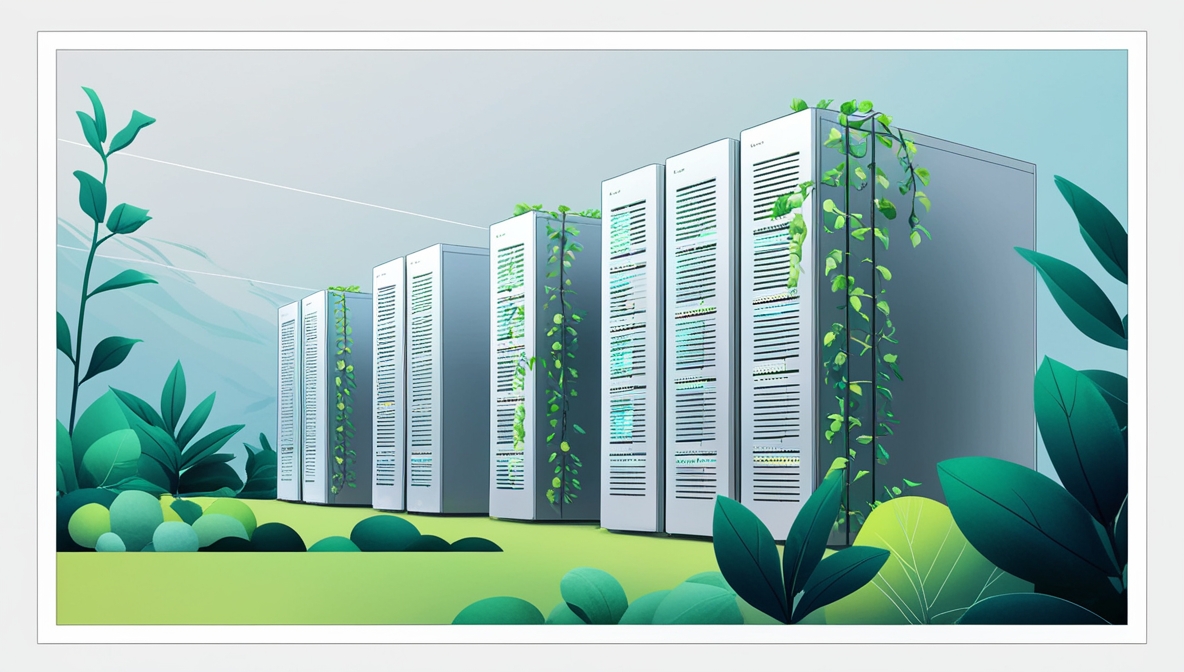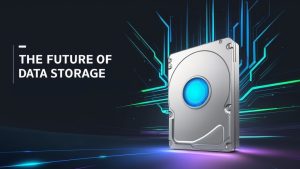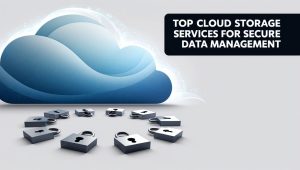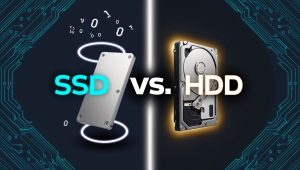The Rise of Green Storage Solutions: Eco-Friendly Data Management
In an age where data grows exponentially, the environmental impact of data storage has emerged as a pressing issue. Traditional storage methods demand extensive power, contribute to carbon emissions, and rely on hardware that often has a short lifecycle. The question, then, is clear: can we manage data in ways that also respect our planet? The answer lies in green storage solutions—a blend of technological innovation and environmental responsibility that offers efficient, sustainable options for data management.
Why Green Storage Matters
The shift to green storage solutions isn’t just a trend; it’s a necessity driven by environmental awareness, regulatory pressures, and the need for cost-effective solutions. As data centers consume large amounts of energy—estimated at nearly 1% of global electricity demand—companies are now seeking sustainable alternatives. Green storage helps reduce energy use, minimize waste, and support corporate sustainability initiatives. This approach not only benefits the environment but also creates financial savings, making it an attractive option for businesses.
Key Components of Green Storage Solutions
Green storage involves various strategies and technologies aimed at reducing the environmental impact of data management. Here are the essential elements that make up eco-friendly data storage:
Energy-Efficient Hardware
Hardware manufacturers are creating storage devices that consume less power while maintaining high performance. Solid-state drives (SSDs), for example, use significantly less energy than traditional hard disk drives (HDDs). They also generate less heat, reducing the cooling demands of data centers.
Data Compression and Deduplication
By compressing data and eliminating duplicate information, data storage systems can significantly reduce the amount of space needed. This not only saves energy but also extends the lifespan of storage devices.
Cloud-Based Storage Solutions
Cloud providers often use large-scale, efficient infrastructure that minimizes power usage. Many cloud providers are now committed to running their data centers on renewable energy, making cloud storage a greener choice for companies looking to reduce their carbon footprint.
Data Lifecycle Management
Data lifecycle management (DLM) policies ensure that data is only stored as long as it’s needed. Automated archiving and deletion policies free up storage resources, allowing for efficient use of data storage without unnecessary waste.
Renewable Energy Integration
Many data centers are integrating renewable energy sources, such as solar and wind, into their power mix. Renewable energy offsets the carbon emissions associated with traditional energy sources, making green storage solutions even more sustainable.
Benefits of Green Storage Solutions
Green storage solutions offer several advantages beyond environmental impact. Here’s why more companies are making the switch:
- Reduced Operational Costs
With energy-efficient hardware and optimized data storage, companies can lower their electricity bills. Reduced energy consumption also lessens the strain on cooling systems, further decreasing operational costs. - Extended Hardware Life
By using strategies like data compression, deduplication, and data lifecycle management, organizations can limit wear on storage devices, extending their usable life and reducing electronic waste. - Enhanced Brand Reputation
Organizations adopting sustainable practices often benefit from improved brand perception. Eco-friendly data management demonstrates a commitment to corporate social responsibility, resonating with customers, partners, and investors. - Regulatory Compliance
As governments and industry bodies introduce stricter environmental regulations, adopting green storage solutions helps companies stay compliant and avoid potential penalties.
Effective Green Storage Strategies
Implementing green storage doesn’t have to mean a complete overhaul of current infrastructure. Many organizations find success by adopting incremental strategies. Here are some actionable methods for integrating green storage:
1. Optimize Existing Storage Systems
- Storage Tiering
By categorizing data based on frequency of access, companies can allocate high-performance storage (like SSDs) to frequently accessed data and use lower-energy solutions for infrequently accessed information. This ensures efficient resource usage while lowering energy demands. - Thin Provisioning
This method allows for the allocation of storage on demand, meaning that storage space is only used when needed, preventing wasted capacity and reducing power consumption. - Data Archiving and Deletion
Regularly reviewing and removing obsolete data helps reduce storage demands. Implementing automatic archiving and deletion schedules can be an effective way to free up storage without impacting operational efficiency.
2. Embrace Cloud Storage with a Green Provider
Selecting a cloud storage provider that uses renewable energy can greatly reduce the carbon footprint of data storage. Providers like Google Cloud, Microsoft Azure, and Amazon Web Services have committed to using green energy for their data centers, making cloud storage an eco-friendly choice.
3. Upgrade to Energy-Efficient Hardware
Investing in energy-efficient storage devices, such as SSDs or energy-optimized HDDs, can yield long-term savings in both power consumption and cooling requirements. While the upfront cost may be higher, the reduced operational expenses over time often make this upgrade financially worthwhile.
4. Integrate Data Deduplication
Deduplication reduces the amount of stored data by removing duplicates, which not only minimizes storage needs but also cuts down on power consumption. Most storage management software now includes deduplication features, making it a straightforward way to lower energy usage.
5. Adopt Renewable Energy Sources for On-Premises Data Centers
If an organization operates its own data center, installing solar panels or using other renewable energy sources can help power storage systems sustainably. Combining renewable energy with energy-efficient hardware maximizes the impact of green storage efforts.
Technologies Driving Green Storage Forward
Innovation plays a significant role in advancing green storage, with the latest data storage technology offering solutions that minimize environmental impact. From Solid-State Drives to Flash Storage Arrays, these advancements continue to push eco-friendly data management forward. Here are some of the emerging technologies that are transforming data management into a greener process:
- Solid-State Drives (SSDs)
SSDs are not only faster but also consume less energy than traditional hard drives, making them a cornerstone of green storage technology. - Flash Storage Arrays
Flash storage offers high-speed data access while requiring less power and cooling compared to conventional disk arrays, reducing the environmental footprint of data storage. - Software-Defined Storage (SDS)
SDS enables efficient data management through virtualization, allowing organizations to manage storage across diverse hardware and reduce redundancy. This technology improves scalability and optimizes resource use, enhancing storage efficiency. - Energy-Aware Storage Management Software
Storage management software can now monitor energy consumption and automatically adjust system settings to minimize power usage, offering a practical way for companies to manage their energy consumption actively.
The Future of Green Storage Solutions
The future of data storage is also shaped by industry events, with major tech conferences showcasing innovations in green storage and sustainability-focused technologies that drive the industry forward. Advances in AI-driven data management, quantum computing, and biodegradable storage materials point to a world where data management is no longer a burden on the environment. As companies prioritize environmental responsibility, green storage solutions will continue to evolve, becoming more accessible and efficient.
Predicted Trends in Green Storage
- Increased Adoption of AI for Energy Management
AI in data management is transforming storage efficiency by predicting energy needs and dynamically optimizing storage performance, offering significant reductions in power consumption and enhancing sustainability efforts. - Expansion of Renewable Energy-Powered Data Centers
The move toward 100% renewable-powered data centers is accelerating. Large companies are already setting ambitious targets, and this trend is expected to gain momentum across industries. - Development of Biodegradable and Recyclable Hardware
Research into biodegradable and recyclable storage materials may soon make it possible to reduce electronic waste significantly, contributing to a truly circular economy in tech.
Conclusion: A Sustainable Approach to Data Storage
As data generation accelerates, the need for sustainable storage solutions is only growing. Green storage offers a promising answer, combining cost savings, operational efficiency, and environmental responsibility. By embracing energy-efficient hardware, cloud solutions, and data management best practices, organizations can reduce their environmental impact while meeting data demands responsibly. The shift to eco-friendly data management is more than a choice—it’s the next evolution in sustainable business.












Post Comment